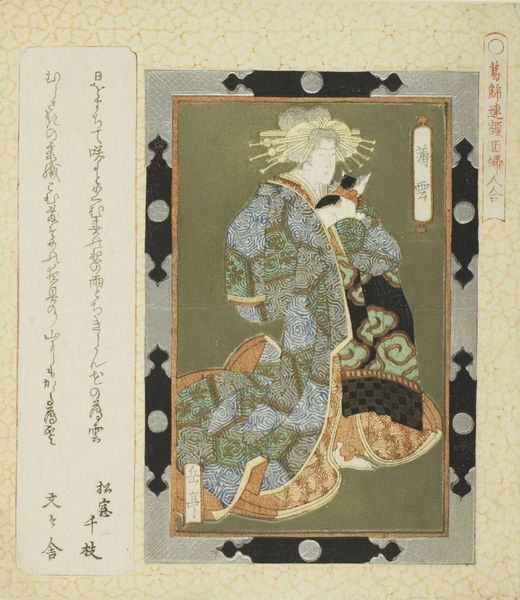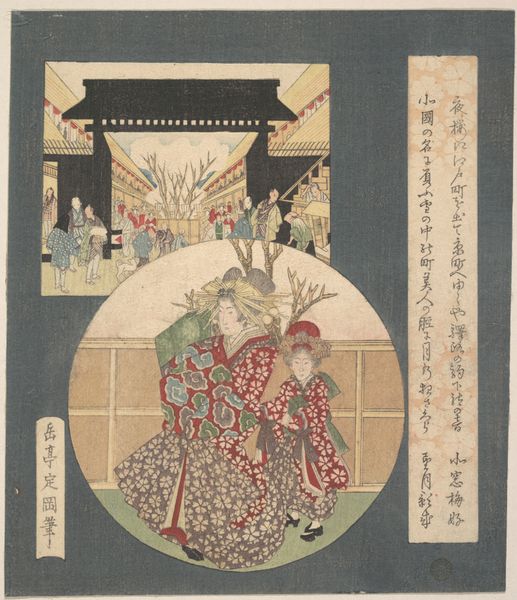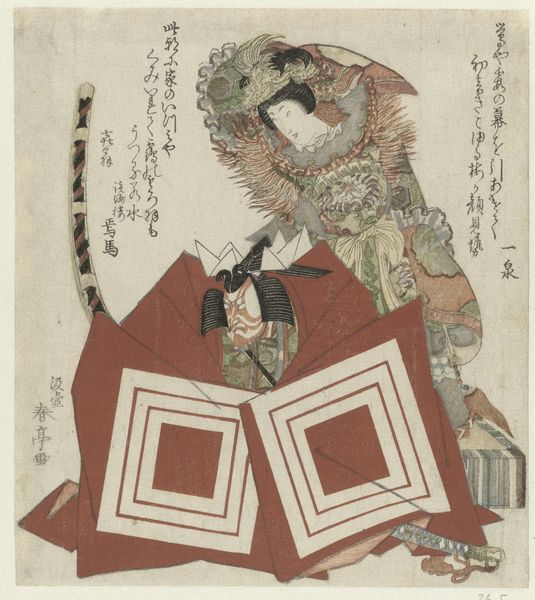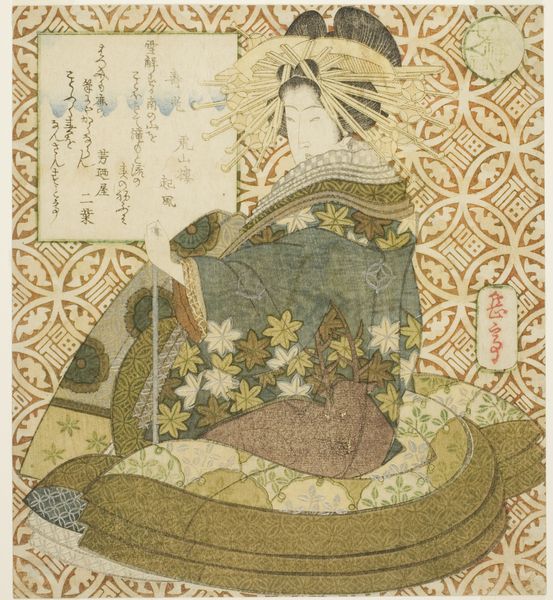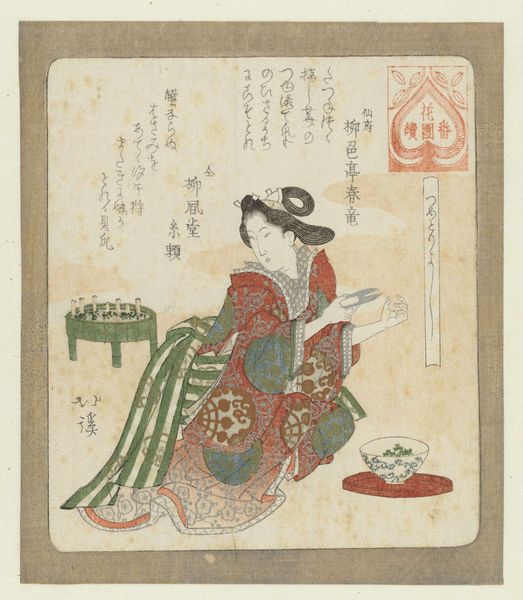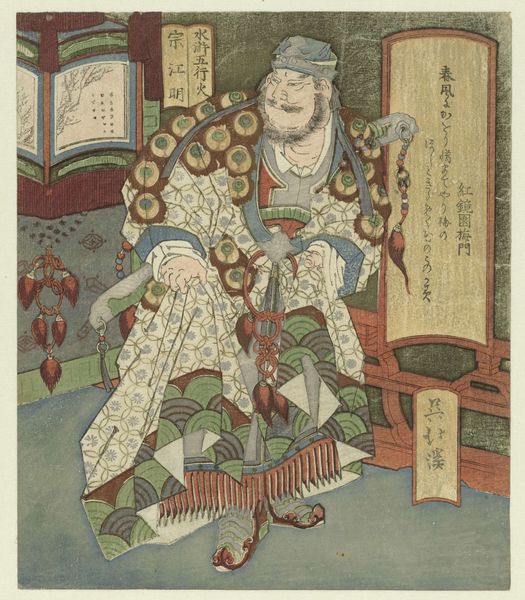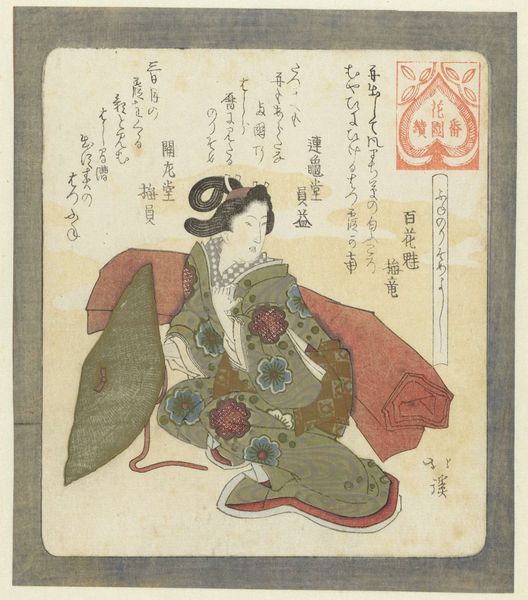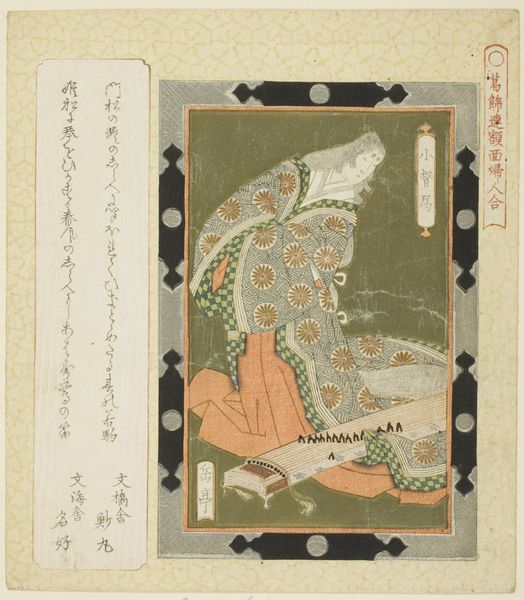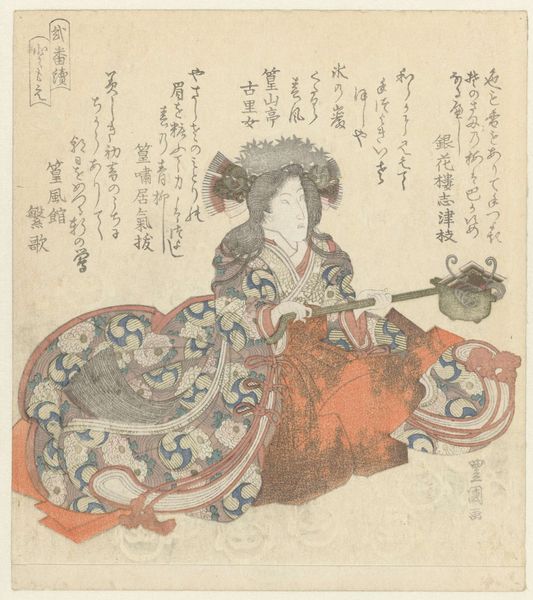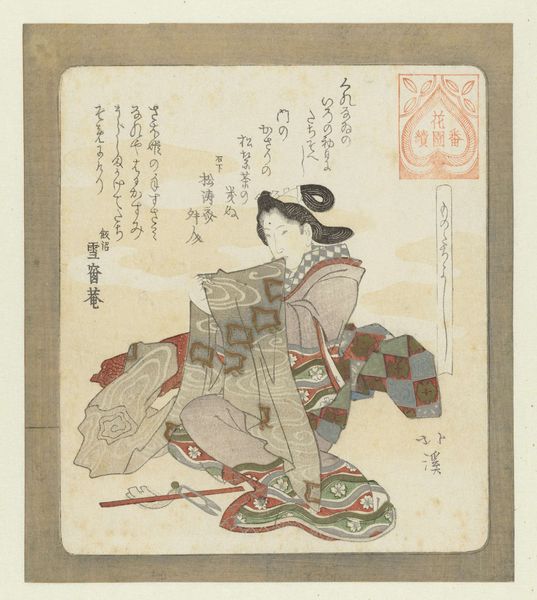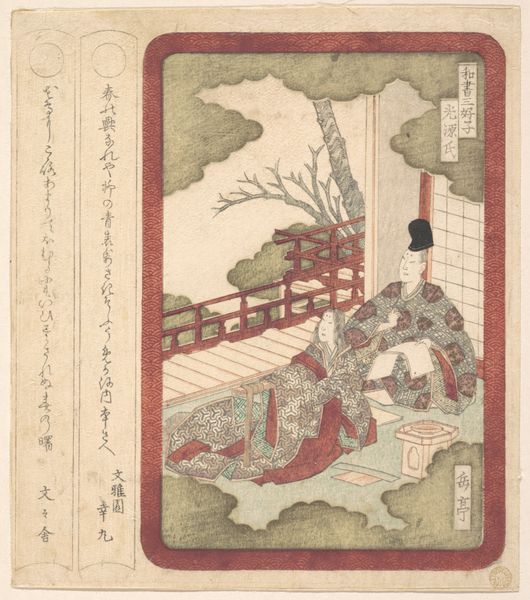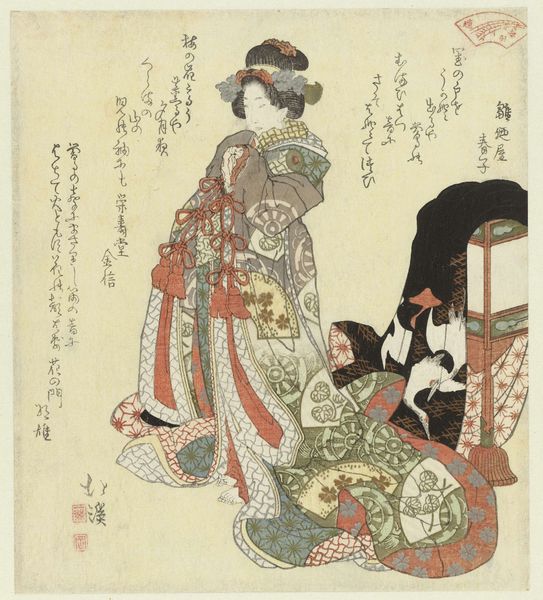
Lady Tomoe (Tomoe jo), from the series "Framed Pictures of Women for the Katsushika Circle (Katsushikaren gakumen fujin awase)" c. 1822
0:00
0:00
#
portrait
# print
#
asian-art
#
ukiyo-e
#
figuration
#
history-painting
Dimensions: 21.8 × 19.1 cm
Copyright: Public Domain
Curator: Immediately, I see an iconic strength tempered with a somber, almost wistful beauty. Editor: The ukiyo-e print, “Lady Tomoe,” crafted around 1822 by Yashima Gakutei, depicts a female warrior in full armor. Its formal title connects her to the Katsushika Circle's portrayal of notable women. What historical context do you see informing this figure? Curator: Lady Tomoe represents an enduring archetype. Dressed as a samurai, the symbols and patterns present reveal not merely armor but a powerful female presence that has lived on through generations. Her gear doesn't hide her identity, it announces it. This echoes throughout history in various portrayals of women in positions of power, their identity not compromised but highlighted. Editor: Absolutely, this image challenges gender norms through the figure of Lady Tomoe, a historical figure celebrated for her bravery and military prowess in feudal Japan. Considering the period this print was produced, in what ways might it have resonated, or clashed, with the existing social expectations of women? Curator: In early 19th-century Japan, the overt display of female martial strength would certainly have sparked a potent visual debate. Her image subtly empowers feminine archetypes beyond conventional bounds, sparking conversations about both women’s potential roles and society’s confining constraints. We have glimpses of powerful female deities that existed from the dawn of civilization and which persist in many traditions today. This print serves to resurrect similar notions. Editor: The "Framed Pictures of Women for the Katsushika Circle” seems a bold endeavor—situating this individual warrior within a broader collective of remarkable women. It makes one consider: who had access to such prints, and what messages were actively being exchanged across different communities through their circulation? Curator: Considering the print’s presence here at the Art Institute of Chicago, it certainly prompts reflections on cultural memory. Such iconic women, carefully enshrined through art, traverse boundaries and cultures, inciting contemplations on themes universal to us all: strength, leadership, and self-definition. Editor: Right, Lady Tomoe serves not merely as an aesthetic subject, but a mirror—one through which past conceptions surrounding gender and might echo into present day reevaluations of empowerment and cultural legacy. Curator: Indeed, her strength visualized in Gakutei's print, keeps stimulating reflection long after it’s been viewed.
Comments
No comments
Be the first to comment and join the conversation on the ultimate creative platform.
